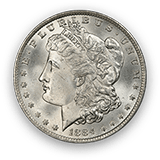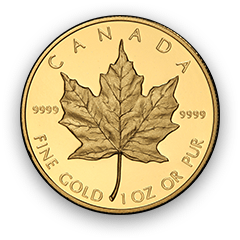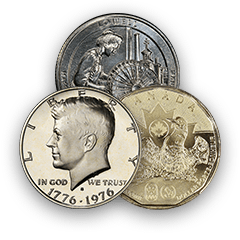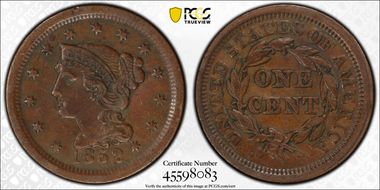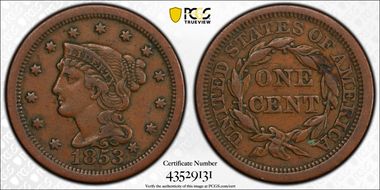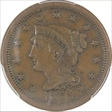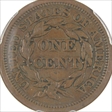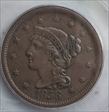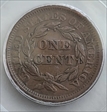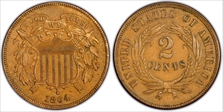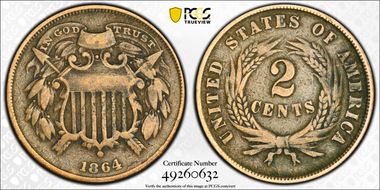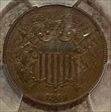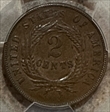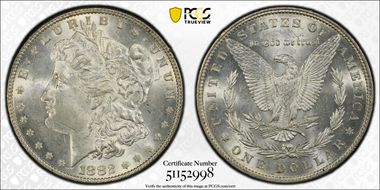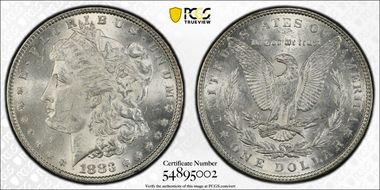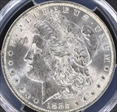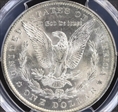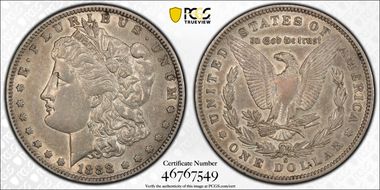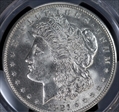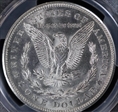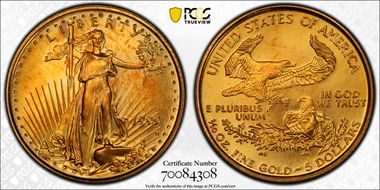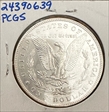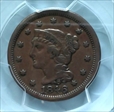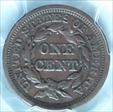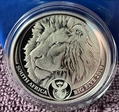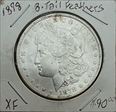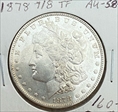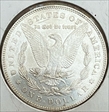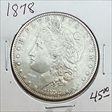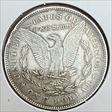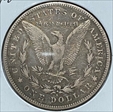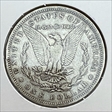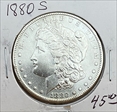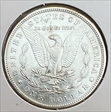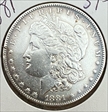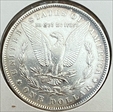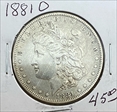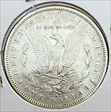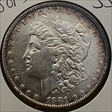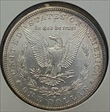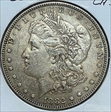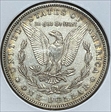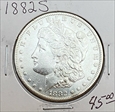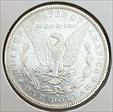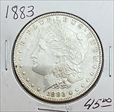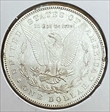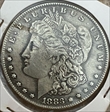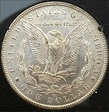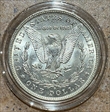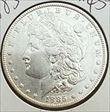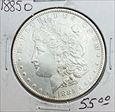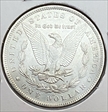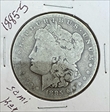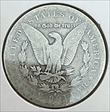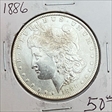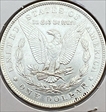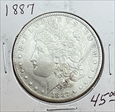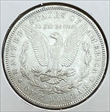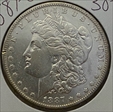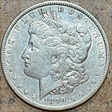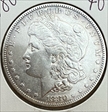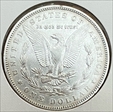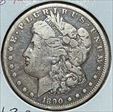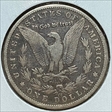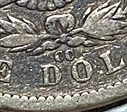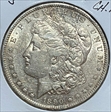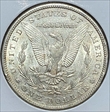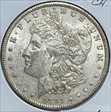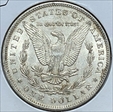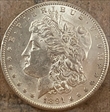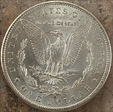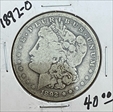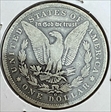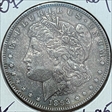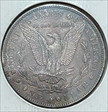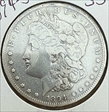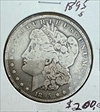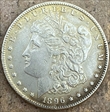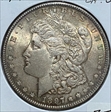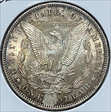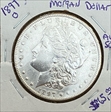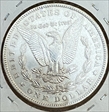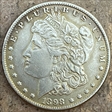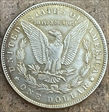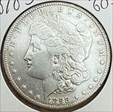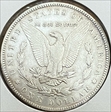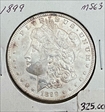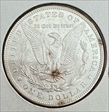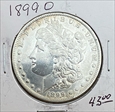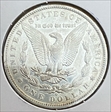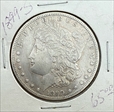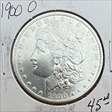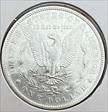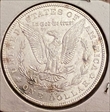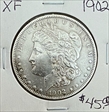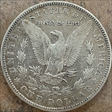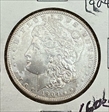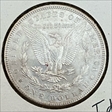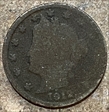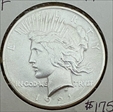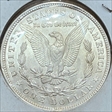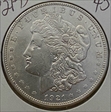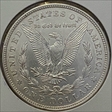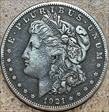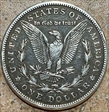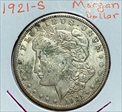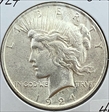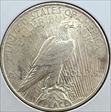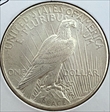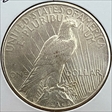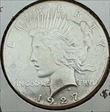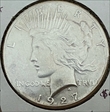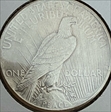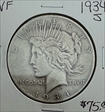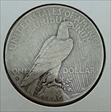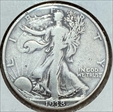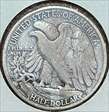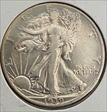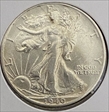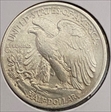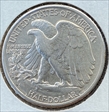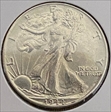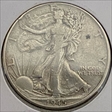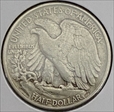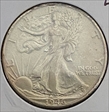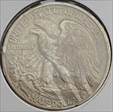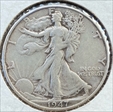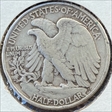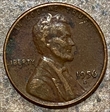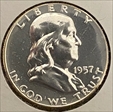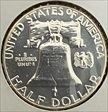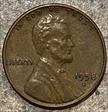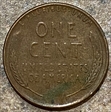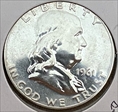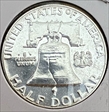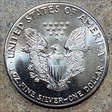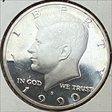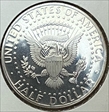moppizzi's Coin Album
1828 Matron Cent Large Narrow Date PCGS Genuine Good Details
1828 Matron Cent Large Narrow Date PCGS Genuine Good Details
1834 Matron Cent Large 8, Small Stars, Medium Letters PCGS Genuine VF Details
1834 Matron Cent Large 8, Small Stars, Medium Letters PCGS Genuine VF Details
1842 Braided Hair Cent Small Date PCGS Genuine VF Details There were over two million 1842 Large Cents struck. However, far fewer examples exist today. Most examples got lost or damaged over the years. There is a Small Date and a Large Date variety for the year. Differentiating each is fairly easy, especially if comparing the four digits on the date.
1842 Braided Hair Cent Small Date PCGS Genuine VF Details There were over two million 1842 Large Cents struck. However, far fewer examples exist today. Most examples got lost or damaged over the years. There is a Small Date and a Large Date variety for the year. Differentiating each is fairly easy, especially if comparing the four digits on the date.
According to Ron Guth: In 1864, the Philadelphia Mint produced two versions of the Two Cent piece, both relating to the size of the letters in the motto IN GOD WE TRUST. The Large Motto replaced the Small Motto and became the model for the remaining years of the Two Cent type. The Large Motto variety is the more common of the two. Cherry-pickers should keep a lookout for the following scarce and interesting varieties: 1864 Large Motto, Doubled Die Obverse 1864 Large Motto, Triple Punched Date 1864 Large Motto, Reverse clashed with the obverse die of an Indian Head Cent! The Act of April 22, 1864, which changed the weight and composition of the cent, including a provision for a bronze two-cent piece. The weight was specified at 96 grains, the alloy being the same as for the cent. The two-cent piece is one of the shortest-lived issues of the United States. The motto IN GOD WE TRUST appeared for the first time on the new coin, with the support of Treasury Secretary Salmon P. Chase. There are two varieties for the first year of issue, 1864; the Small Motto, which is scarce, and the Large Motto. The stem to the leaf shows plainly on the Small Motto variety. There is no stem on the Large Motto. The first T in TRUST is very close to the ribbon crease at left on the Small Motto variety; there is a 1 mm gap on the Large Motto variety. The shield device is very similar to that on the nickel five-cent piece introduced in 1866.
According to Ron Guth: In 1864, the Philadelphia Mint produced two versions of the Two Cent piece, both relating to the size of the letters in the motto IN GOD WE TRUST. The Large Motto replaced the Small Motto and became the model for the remaining years of the Two Cent type. The Large Motto variety is the more common of the two. Cherry-pickers should keep a lookout for the following scarce and interesting varieties: 1864 Large Motto, Doubled Die Obverse 1864 Large Motto, Triple Punched Date 1864 Large Motto, Reverse clashed with the obverse die of an Indian Head Cent! The Act of April 22, 1864, which changed the weight and composition of the cent, including a provision for a bronze two-cent piece. The weight was specified at 96 grains, the alloy being the same as for the cent. The two-cent piece is one of the shortest-lived issues of the United States. The motto IN GOD WE TRUST appeared for the first time on the new coin, with the support of Treasury Secretary Salmon P. Chase. There are two varieties for the first year of issue, 1864; the Small Motto, which is scarce, and the Large Motto. The stem to the leaf shows plainly on the Small Motto variety. There is no stem on the Large Motto. The first T in TRUST is very close to the ribbon crease at left on the Small Motto variety; there is a 1 mm gap on the Large Motto variety. The shield device is very similar to that on the nickel five-cent piece introduced in 1866.
According to Ron Guth: In 1864, the Philadelphia Mint produced two versions of the Two Cent piece, both relating to the size of the letters in the motto IN GOD WE TRUST. The Large Motto replaced the Small Motto and became the model for the remaining years of the Two Cent type. The Large Motto variety is the more common of the two. Cherry-pickers should keep a lookout for the following scarce and interesting varieties: 1864 Large Motto, Doubled Die Obverse 1864 Large Motto, Triple Punched Date 1864 Large Motto, Reverse clashed with the obverse die of an Indian Head Cent! The Act of April 22, 1864, which changed the weight and composition of the cent, including a provision for a bronze two-cent piece. The weight was specified at 96 grains, the alloy being the same as for the cent. The two-cent piece is one of the shortest-lived issues of the United States. The motto IN GOD WE TRUST appeared for the first time on the new coin, with the support of Treasury Secretary Salmon P. Chase. There are two varieties for the first year of issue, 1864; the Small Motto, which is scarce, and the Large Motto. The stem to the leaf shows plainly on the Small Motto variety. There is no stem on the Large Motto. The first T in TRUST is very close to the ribbon crease at left on the Small Motto variety; there is a 1 mm gap on the Large Motto variety. The shield device is very similar to that on the nickel five-cent piece introduced in 1866.
According to Ron Guth: In 1864, the Philadelphia Mint produced two versions of the Two Cent piece, both relating to the size of the letters in the motto IN GOD WE TRUST. The Large Motto replaced the Small Motto and became the model for the remaining years of the Two Cent type. The Large Motto variety is the more common of the two. Cherry-pickers should keep a lookout for the following scarce and interesting varieties: 1864 Large Motto, Doubled Die Obverse 1864 Large Motto, Triple Punched Date 1864 Large Motto, Reverse clashed with the obverse die of an Indian Head Cent! The Act of April 22, 1864, which changed the weight and composition of the cent, including a provision for a bronze two-cent piece. The weight was specified at 96 grains, the alloy being the same as for the cent. The two-cent piece is one of the shortest-lived issues of the United States. The motto IN GOD WE TRUST appeared for the first time on the new coin, with the support of Treasury Secretary Salmon P. Chase. There are two varieties for the first year of issue, 1864; the Small Motto, which is scarce, and the Large Motto. The stem to the leaf shows plainly on the Small Motto variety. There is no stem on the Large Motto. The first T in TRUST is very close to the ribbon crease at left on the Small Motto variety; there is a 1 mm gap on the Large Motto variety. The shield device is very similar to that on the nickel five-cent piece introduced in 1866.
The Act of April 22, 1864, which changed the weight and composition of the cent, including a provision for a bronze two-cent piece. The weight was specified at 96 grains, the alloy being the same as for the cent. The two-cent piece is one of the shortest-lived issues of the United States. The motto IN GOD WE TRUST appeared for the first time on the new coin, with the support of Treasury Secretary Salmon P. Chase. There are two varieties for the first year of issue, 1864; the Small Motto, which is scarce, and the Large Motto. The stem to the leaf shows plainly on the Small Motto variety. There is no stem on the Large Motto. The first T in TRUST is very close to the ribbon crease at left on the Small Motto variety; there is a 1 mm gap on the Large Motto variety. The shield device is very similar to that on the nickel five-cent piece introduced in 1866.
The Act of April 22, 1864, which changed the weight and composition of the cent, including a provision for a bronze two-cent piece. The weight was specified at 96 grains, the alloy being the same as for the cent. The two-cent piece is one of the shortest-lived issues of the United States. The motto IN GOD WE TRUST appeared for the first time on the new coin, with the support of Treasury Secretary Salmon P. Chase. There are two varieties for the first year of issue, 1864; the Small Motto, which is scarce, and the Large Motto. The stem to the leaf shows plainly on the Small Motto variety. There is no stem on the Large Motto. The first T in TRUST is very close to the ribbon crease at left on the Small Motto variety; there is a 1 mm gap on the Large Motto variety. The shield device is very similar to that on the nickel five-cent piece introduced in 1866.
The Act of April 22, 1864, which changed the weight and composition of the cent, including a provision for a bronze two-cent piece. The weight was specified at 96 grains, the alloy being the same as for the cent. The two-cent piece is one of the shortest-lived issues of the United States. The motto IN GOD WE TRUST appeared for the first time on the new coin, with the support of Treasury Secretary Salmon P. Chase. The shield device is very similar to that on the nickel five-cent piece introduced in 1866.
The Act of April 22, 1864, which changed the weight and composition of the cent, including a provision for a bronze two-cent piece. The weight was specified at 96 grains, the alloy being the same as for the cent. The two-cent piece is one of the shortest-lived issues of the United States. The motto IN GOD WE TRUST appeared for the first time on the new coin, with the support of Treasury Secretary Salmon P. Chase. The shield device is very similar to that on the nickel five-cent piece introduced in 1866.
The Act of April 22, 1864, which changed the weight and composition of the cent, including a provision for a bronze two-cent piece. The weight was specified at 96 grains, the alloy being the same as for the cent. The two-cent piece is one of the shortest-lived issues of the United States. The motto IN GOD WE TRUST appeared for the first time on the new coin, with the support of Treasury Secretary Salmon P. Chase. The shield device is very similar to that on the nickel five-cent piece introduced in 1866.
The Act of April 22, 1864, which changed the weight and composition of the cent, including a provision for a bronze two-cent piece. The weight was specified at 96 grains, the alloy being the same as for the cent. The two-cent piece is one of the shortest-lived issues of the United States. The motto IN GOD WE TRUST appeared for the first time on the new coin, with the support of Treasury Secretary Salmon P. Chase. The shield device is very similar to that on the nickel five-cent piece introduced in 1866.
The Act of April 22, 1864, which changed the weight and composition of the cent, including a provision for a bronze two-cent piece. The weight was specified at 96 grains, the alloy being the same as for the cent. The two-cent piece is one of the shortest-lived issues of the United States. The motto IN GOD WE TRUST appeared for the first time on the new coin, with the support of Treasury Secretary Salmon P. Chase. The shield device is very similar to that on the nickel five-cent piece introduced in 1866.
The Act of April 22, 1864, which changed the weight and composition of the cent, including a provision for a bronze two-cent piece. The weight was specified at 96 grains, the alloy being the same as for the cent. The two-cent piece is one of the shortest-lived issues of the United States. The motto IN GOD WE TRUST appeared for the first time on the new coin, with the support of Treasury Secretary Salmon P. Chase. The shield device is very similar to that on the nickel five-cent piece introduced in 1866.
The Act of April 22, 1864, which changed the weight and composition of the cent, including a provision for a bronze two-cent piece. The weight was specified at 96 grains, the alloy being the same as for the cent. The two-cent piece is one of the shortest-lived issues of the United States. The motto IN GOD WE TRUST appeared for the first time on the new coin, with the support of Treasury Secretary Salmon P. Chase. The shield device is very similar to that on the nickel five-cent piece introduced in 1866.
The Act of April 22, 1864, which changed the weight and composition of the cent, including a provision for a bronze two-cent piece. The weight was specified at 96 grains, the alloy being the same as for the cent. The two-cent piece is one of the shortest-lived issues of the United States. The motto IN GOD WE TRUST appeared for the first time on the new coin, with the support of Treasury Secretary Salmon P. Chase. The shield device is very similar to that on the nickel five-cent piece introduced in 1866.
The Act of April 22, 1864, which changed the weight and composition of the cent, including a provision for a bronze two-cent piece. The weight was specified at 96 grains, the alloy being the same as for the cent. The two-cent piece is one of the shortest-lived issues of the United States. The motto IN GOD WE TRUST appeared for the first time on the new coin, with the support of Treasury Secretary Salmon P. Chase. The shield device is very similar to that on the nickel five-cent piece introduced in 1866.
The Act of April 22, 1864, which changed the weight and composition of the cent, including a provision for a bronze two-cent piece. The weight was specified at 96 grains, the alloy being the same as for the cent. The two-cent piece is one of the shortest-lived issues of the United States. The motto IN GOD WE TRUST appeared for the first time on the new coin, with the support of Treasury Secretary Salmon P. Chase. The shield device is very similar to that on the nickel five-cent piece introduced in 1866.
The Act of April 22, 1864, which changed the weight and composition of the cent, including a provision for a bronze two-cent piece. The weight was specified at 96 grains, the alloy being the same as for the cent. The two-cent piece is one of the shortest-lived issues of the United States. The motto IN GOD WE TRUST appeared for the first time on the new coin, with the support of Treasury Secretary Salmon P. Chase. The shield device is very similar to that on the nickel five-cent piece introduced in 1866.
The Act of April 22, 1864, which changed the weight and composition of the cent, including a provision for a bronze two-cent piece. The weight was specified at 96 grains, the alloy being the same as for the cent. The two-cent piece is one of the shortest-lived issues of the United States. The motto IN GOD WE TRUST appeared for the first time on the new coin, with the support of Treasury Secretary Salmon P. Chase. The shield device is very similar to that on the nickel five-cent piece introduced in 1866.
Morgan Silver Dollar K&R Rare Coins PO Box 1424 Gladwater, TX 75647 (214) 679-5527 GA Numismatic Assn 59th Dalton, GA
Morgan Silver Dollar K&R Rare Coins PO Box 1424 Gladwater, TX 75647 (214) 679-5527 GA Numismatic Assn 59th Dalton, GA
Morgan Silver Dollar K&R Rare Coins PO Box 1424 Gladwater, TX 75647 (214) 679-5527 GA Numismatic Assn 59th Dalton, GA
Order # 27-12962-46002 MBarr Coins 201 E Patrick St., Ste 3505 Frederickburg, MD 21705 (866) 220-0897
Order # 27-12962-46002 MBarr Coins 201 E Patrick St., Ste 3505 Frederickburg, MD 21705 (866) 220-0897
Order # 27-12962-46002 MBarr Coins 201 E Patrick St., Ste 3505 Frederickburg, MD 21705 (866) 220-0897
Order # 27-12962-46002 MBarr Coins 201 E Patrick St., Ste 3505 Frederickburg, MD 21705 (866) 220-0897
Order # 27-12962-46002 MBarr Coins 201 E Patrick St., Ste 3505 Frederickburg, MD 21705 (866) 220-0897
Coin Information: Country: United States Year: 1999 Denomination: $5 PCGS / Industry #: 99940 Additional Info: Made from Unfinished Proof Dies Strike Type: Business Strike Mint Location: West Point Designer: Augustus Saint-Gaudens and Miley Busiek Coin Weight: 3.393 g Diameter: 16.5 mm Composition: .9167 gold, .03 silver, .0533 copper Item Information: Grading Service: PCGS MS-69 GC Item Title: 1999-W $5 Tenth-Ounce Gold American Eagle Made from Unfinished Proof Dies PCGS MS-69 Certification Number: 70084308 About 1999-W $5 Tenth-Ounce Gold American Eagles: An unusual and valuable error was produced by the U.S. Mint in 1999 while minting the $5 (1/10th Ounce) and $10 (Quarter Ounce) Gold Eagles. The coins were struck depicting a "W" mint mark, which was usually only used for the Proof Gold Eagles. The error was discovered in early 2000 when coins started to appear in the market showing the mint mark puzzling collectors and dealers alike. After being reviewed by experts, it was determined that the coins were struck with unfinished (or unpolished) proof dies. The U.S. Mint had said that about 6000 coins can be produced from a single pair of proof dies, which leads us to believe that about this number exists of the $5 1/10th Ounce Gold Eagle with the W Mint Mark (Struck from Unfinished Proof Dies).
Coin Information: Country: United States Year: 1999 Denomination: $5 PCGS / Industry #: 99940 Additional Info: Made from Unfinished Proof Dies Strike Type: Business Strike Mint Location: West Point Designer: Augustus Saint-Gaudens and Miley Busiek Coin Weight: 3.393 g Diameter: 16.5 mm Composition: .9167 gold, .03 silver, .0533 copper Item Information: Grading Service: PCGS MS-69 GC Item Title: 1999-W $5 Tenth-Ounce Gold American Eagle Made from Unfinished Proof Dies PCGS MS-69 Certification Number: 70084308 About 1999-W $5 Tenth-Ounce Gold American Eagles: An unusual and valuable error was produced by the U.S. Mint in 1999 while minting the $5 (1/10th Ounce) and $10 (Quarter Ounce) Gold Eagles. The coins were struck depicting a "W" mint mark, which was usually only used for the Proof Gold Eagles. The error was discovered in early 2000 when coins started to appear in the market showing the mint mark puzzling collectors and dealers alike. After being reviewed by experts, it was determined that the coins were struck with unfinished (or unpolished) proof dies. The U.S. Mint had said that about 6000 coins can be produced from a single pair of proof dies, which leads us to believe that about this number exists of the $5 1/10th Ounce Gold Eagle with the W Mint Mark (Struck from Unfinished Proof Dies).
Coin Information: Country: United States Year: 1999 Denomination: $5 PCGS / Industry #: 99940 Additional Info: Made from Unfinished Proof Dies Strike Type: Business Strike Mint Location: West Point Designer: Augustus Saint-Gaudens and Miley Busiek Coin Weight: 3.393 g Diameter: 16.5 mm Composition: .9167 gold, .03 silver, .0533 copper Item Information: Grading Service: PCGS MS-69 GC Item Title: 1999-W $5 Tenth-Ounce Gold American Eagle Made from Unfinished Proof Dies PCGS MS-69 Certification Number: 70084308 About 1999-W $5 Tenth-Ounce Gold American Eagles: An unusual and valuable error was produced by the U.S. Mint in 1999 while minting the $5 (1/10th Ounce) and $10 (Quarter Ounce) Gold Eagles. The coins were struck depicting a "W" mint mark, which was usually only used for the Proof Gold Eagles. The error was discovered in early 2000 when coins started to appear in the market showing the mint mark puzzling collectors and dealers alike. After being reviewed by experts, it was determined that the coins were struck with unfinished (or unpolished) proof dies. The U.S. Mint had said that about 6000 coins can be produced from a single pair of proof dies, which leads us to believe that about this number exists of the $5 1/10th Ounce Gold Eagle with the W Mint Mark (Struck from Unfinished Proof Dies).
Coin Information: Country: United States Year: 1999 Denomination: $5 PCGS / Industry #: 99940 Additional Info: Made from Unfinished Proof Dies Strike Type: Business Strike Mint Location: West Point Designer: Augustus Saint-Gaudens and Miley Busiek Coin Weight: 3.393 g Diameter: 16.5 mm Composition: .9167 gold, .03 silver, .0533 copper Item Information: Grading Service: PCGS MS-69 GC Item Title: 1999-W $5 Tenth-Ounce Gold American Eagle Made from Unfinished Proof Dies PCGS MS-69 Certification Number: 70084308 About 1999-W $5 Tenth-Ounce Gold American Eagles: An unusual and valuable error was produced by the U.S. Mint in 1999 while minting the $5 (1/10th Ounce) and $10 (Quarter Ounce) Gold Eagles. The coins were struck depicting a "W" mint mark, which was usually only used for the Proof Gold Eagles. The error was discovered in early 2000 when coins started to appear in the market showing the mint mark puzzling collectors and dealers alike. After being reviewed by experts, it was determined that the coins were struck with unfinished (or unpolished) proof dies. The U.S. Mint had said that about 6000 coins can be produced from a single pair of proof dies, which leads us to believe that about this number exists of the $5 1/10th Ounce Gold Eagle with the W Mint Mark (Struck from Unfinished Proof Dies).
Invoice # 261942 Steve Forbes Silver American Eagle Signed Coin BU
Invoice # 261942 Steve Forbes Silver American Eagle Signed Coin BU
2nd President 1797-1801
2nd President 1797-1801
Order # 21-11976-22152
Order # 21-11976-22152
Bellingham Coin Shop Order # 01-08620-66496 USPS Tracking: 9400108205498806744818 Shipped: 5/12/2022 Received: 5/16/2022 NGC # 5765143-075
Bellingham Coin Shop Order # 01-08620-66496 USPS Tracking: 9400108205498806744818 Shipped: 5/12/2022 Received: 5/16/2022 NGC # 5765143-075
Order # 18-11980-99907
Order # 18-11980-99907
Order # 18-11980-99907
eBay: Houston Coin Buyer Order # 07-11995-11841 65 + 3.50 shipping = $68.50
eBay: Houston Coin Buyer Order # 07-11995-11841 65 + 3.50 shipping = $68.50
eBay: Houston Coin Buyer Order # 07-11995-11841 65 + 3.50 shipping = $68.50
eBay: Houston Coin Buyer Order # 07-11995-11841 65 + 3.50 shipping = $68.50
Redbook Coins Order # 26-08618-50712 USPS Tracking: 9400108205499562178183 Shipped: 5/12/2022 estimated Received: 5/17/2022
Redbook Coins Order # 26-08618-50712 USPS Tracking: 9400108205499562178183 Shipped: 5/12/2022 estimated Received: 5/17/2022
SA 2022 1oz Silver Big 5 Lion NGC MS70 NGC Certification # 6546192-105 South African Mint
SA 2022 1oz Silver Big 5 Lion NGC MS70 NGC Certification # 6546192-105 South African Mint
SA 2022 1oz Silver Krugerrand NGC MS70 FR Springbok NGC Certification # 6542472-044
SA 2022 1oz Silver Krugerrand NGC MS70 FR Springbok NGC Certification # 6542472-044
Jesse James Rare Coins - Hudson, WI Order # 17-08586-63170 USPS Tracking # 9400108205499521441983 Shipped: 5/4/2022 Rcvd: 5/9/2022
Jesse James Rare Coins - Hudson, WI Order # 17-08586-63170 USPS Tracking # 9400108205499521441983 Shipped: 5/4/2022 Rcvd: 5/9/2022
First Reverse, 8 Tail Feathers
First Reverse, 8 Tail Feathers
Second Reverse Parallel top arrow feather, concave breast.
Second Reverse Parallel top arrow feather, concave breast.
GA Numismatic Assn 58th Anniversary Show Dalton, GA
GA Numismatic Assn 58th Anniversary Show Dalton, GA
GA Numismatic Assn 58th Anniversary Show Dalton, GA
GA Numismatic Assn 58th Anniversary Show Dalton, GA
GA Numismatic Assn 58th Anniversary Show Dalton, GA
GA Numismatic Assn 58th Anniversary Show Dalton, GA
Purchased from Appalachian State University professor Larry Kortering Ed.D
Purchased from Appalachian State University professor Larry Kortering Ed.D
GA Numismatic Assn 58th Anniversary Show Dalton, GA
GA Numismatic Assn 58th Anniversary Show Dalton, GA
GA Numismatic Assn 58th Anniversary Show Dalton, GA
GA Numismatic Assn 58th Anniversary Show Dalton, GA
GA Numismatic Assn 58th Anniversary Show Dalton, GA
GA Numismatic Assn 58th Anniversary Show Dalton, GA
This coin in average condition will be valued at somewhere around $3... This coin in poor condition is still worth $1.88 more than the intrinsic value from silver content of $1.12, this coin is thus more valuable to a collector than to a silver bug.
This coin in average condition will be valued at somewhere around $3... This coin in poor condition is still worth $1.88 more than the intrinsic value from silver content of $1.12, this coin is thus more valuable to a collector than to a silver bug.
According to About.com (read article here) any V-Nickel that has a legible date is worth 15x it's face value at least. 15 x .05 is .75 or 75 cents. As a rough estimate of this coins value you can assume this coin in average condition will be valued at somewhere around $2.50
According to About.com (read article here) any V-Nickel that has a legible date is worth 15x it's face value at least. 15 x .05 is .75 or 75 cents. As a rough estimate of this coins value you can assume this coin in average condition will be valued at somewhere around $2.50
According to About.com (read article here) any V-Nickel that has a legible date is worth 15x it's face value at least. 15 x .05 is .75 or 75 cents.
According to About.com (read article here) any V-Nickel that has a legible date is worth 15x it's face value at least. 15 x .05 is .75 or 75 cents.
Mike Sexton
Mike Sexton
Originally purchased from PCS Stamps & Coins PC-4520192206 Guaranteed Genuine
Originally purchased from PCS Stamps & Coins PC-4520192206 Guaranteed Genuine
David Redding
David Redding
David Redding
David Redding
Struck at San Francisco Mint First Year of Issue
Struck at San Francisco Mint First Year of Issue
1987 $1 Silver Eagle MS 69 1213847-410 Numismatic Guaranty Corporation
1987 $1 Silver Eagle MS 69 1213847-410 Numismatic Guaranty Corporation
NGC Certified # 6086229-012
NGC Certified # 6086229-012
1989 $25 Gold American Eagle MS69 NGC 3376323-110
1989 $25 Gold American Eagle MS69 NGC 3376323-110
1989 $1 Silver Eagle MS 69 1554439-230 Numismatic Guaranty Corporation
1989 $1 Silver Eagle MS 69 1554439-230 Numismatic Guaranty Corporation
1990 $1 Silver Eagle MS 69 3551768-148 Numismatic Guaranty Corporation
1990 $1 Silver Eagle MS 69 3551768-148 Numismatic Guaranty Corporation
NGC # 154262-019 GA Numismatic Assn 58th Anniversary Show Dalton, GA Mark Graff
NGC # 154262-019 GA Numismatic Assn 58th Anniversary Show Dalton, GA Mark Graff
NGC Certified # 6012569-212
NGC Certified # 6012569-212
NGC # 124837-061 GA Numismatic Assn 58th Anniversary Show Dalton, GA Mark Graff
NGC # 124837-061 GA Numismatic Assn 58th Anniversary Show Dalton, GA Mark Graff
